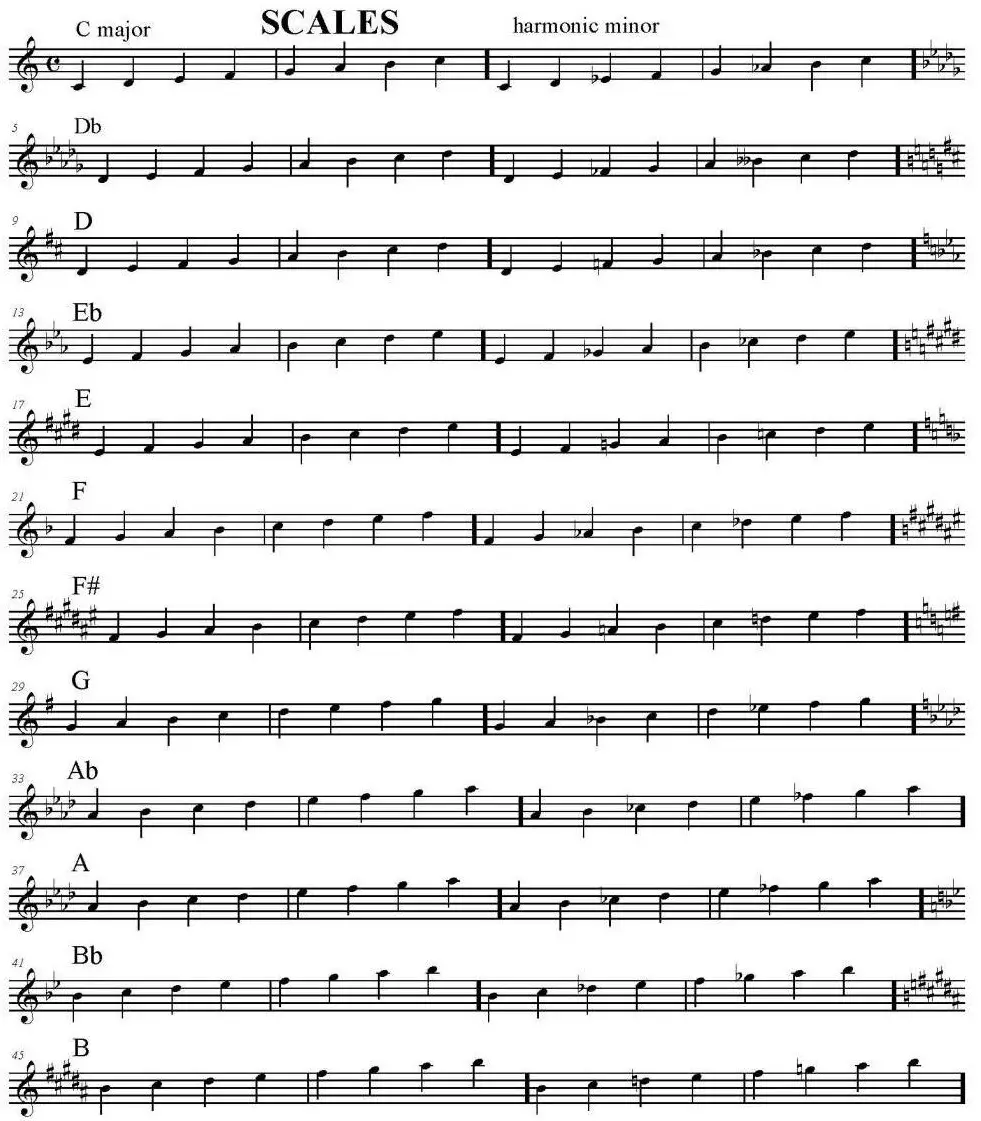Playing the piano is no easy feat - it requires hours of practice, patience and dedication. But if you’re just starting out, there are a few things you can do to make the learning process easier, and one of those things is mastering the art of piano scales. Scales are a series of notes played in a particular order that form the foundation of all piano music. By practicing them regularly, you’ll develop stronger fingers, better hand coordination and a better understanding of how music is structured. Here are some different piano scales you can try out to get started: 1. C Major Scale This is one of the easiest scales to learn and is often taught to beginners first. It consists of playing the white keys from C to C, starting and ending on Middle C (the C closest to the middle of the keyboard). Here’s what the C major scale looks like on the piano:
C Major Scale
 Practice playing each note of the C major scale, making sure to use proper fingering (starting with your thumb and ending with your pinky finger on the way up, then reversing that pattern on the way down). Try to play evenly and smoothly, and gradually increase the speed as you become more comfortable with the scale.
Practice playing each note of the C major scale, making sure to use proper fingering (starting with your thumb and ending with your pinky finger on the way up, then reversing that pattern on the way down). Try to play evenly and smoothly, and gradually increase the speed as you become more comfortable with the scale.
- A Minor Scale The A minor scale is another popular scale for beginners, as it only involves playing the white keys as well (but starts and ends on A). Here’s what it looks like on the piano: A Minor Scale
 Like with the C major scale, begin by practicing each note individually, using proper fingering. Focus on making each note sound clean and clear, and make sure to play evenly and smoothly as you move up and down the scale.
Like with the C major scale, begin by practicing each note individually, using proper fingering. Focus on making each note sound clean and clear, and make sure to play evenly and smoothly as you move up and down the scale.
- G Major Scale The G major scale is a little more challenging, as it involves playing some of the black keys as well as the white keys. Here’s what it looks like on the piano: G Major Scale
 Take your time with this one, practicing each note slowly and making sure to use the correct fingering. Use the black keys as reference points to help you find your way up and down the scale. As with the other scales, aim to play evenly and smoothly, and gradually increase your speed as you become more familiar with the scale.
Take your time with this one, practicing each note slowly and making sure to use the correct fingering. Use the black keys as reference points to help you find your way up and down the scale. As with the other scales, aim to play evenly and smoothly, and gradually increase your speed as you become more familiar with the scale.
- E Minor Scale The E minor scale is similar to the A minor scale, but it starts and ends on E instead. Here’s what it looks like on the piano: E Minor Scale
 Practice each note of the scale carefully, taking care to use proper fingering and making each note sound clean and clear. As with the other scales, aim to play smoothly and evenly, and gradually increase your speed as you become more familiar with the scale.
Practice each note of the scale carefully, taking care to use proper fingering and making each note sound clean and clear. As with the other scales, aim to play smoothly and evenly, and gradually increase your speed as you become more familiar with the scale.
- D Major Scale The D major scale is another scale that involves playing some of the black keys. Here’s what it looks like on the piano: D Major Scale
 This scale can be a little tricky, so take your time as you practice each note individually. Use the black keys as reference points and aim to play smoothly and evenly. As you become more comfortable with the scale, gradually increase your speed and work on playing it fluently.
This scale can be a little tricky, so take your time as you practice each note individually. Use the black keys as reference points and aim to play smoothly and evenly. As you become more comfortable with the scale, gradually increase your speed and work on playing it fluently.
By practicing these scales regularly, you’ll be well on your way to mastering the art of piano playing. Once you have these scales down, you’ll be able to play a wide variety of music with greater ease and confidence. So keep at it, and don’t forget to have fun!